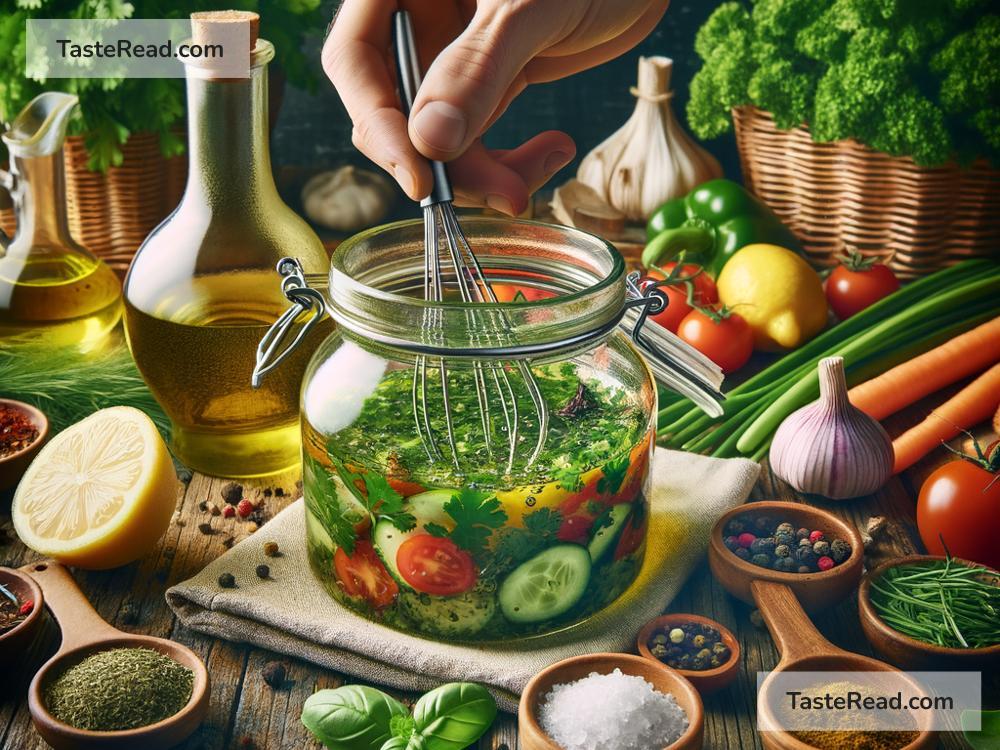How to Create a Signature Salad Dressing
There’s something special about a salad drizzled with homemade dressing. Whether you enjoy crunchy greens or colorful veggies, the dressing brings everything together. Store-bought ones are convenient, but they often contain preservatives, extra sugar, or flavors that aren’t as good as fresh. Why not make your own signature salad dressing? You can customize the flavor, control the ingredients, and impress your family or dinner guests.
Here’s a step-by-step, simple guide to creating your very own salad dressing from scratch. Let’s dive in!
1. Understand the Basics of Salad Dressing
Before you start experimenting, it’s helpful to know the basics. Most salad dressings fall into one of two categories: vinaigrette (oil-based) or creamy (typically mayo or yogurt-based). These types have a simple formula:
- Vinaigrette: Oil + Acid + Flavorings
- Creamy Dressing: Dairy or Mayo + Acid + Flavorings
Understanding this foundation will help you mix and match ingredients easily. Think of your dressing as a balance of flavors—salty, sweet, sour, and sometimes spicy.
2. Choose Your Base
The base gives your dressing body and texture. Here’s how you can decide:
- For a vinaigrette, the base is typically oil. Popular options include olive oil, avocado oil, or grapeseed oil. Olive oil is widely used because of its smooth texture and mild taste.
- For a creamy dressing, you’ll need something thick. Try mayonnaise, Greek yogurt, sour cream, or buttermilk. Greek yogurt is a healthier alternative if you want a creamy texture without extra fat.
3. Pick Your Acid
The acid is what gives your dressing its tangy flavor. It helps balance out the richness of the base. Acids come in different forms, such as:
- Vinegars: Balsamic, apple cider, red wine, white wine, or rice vinegar are some of the most common choices. Each type adds a unique flavor—balsamic is sweet and deep, while apple cider is fruity and sharp.
- Citrus Juice: Lemon, lime, or orange juice add freshness and brightness to your dressing. Citrus pairs especially well with vinaigrettes.
For a vinaigrette, use about a 3-to-1 ratio of oil to acid. For creamy dressings, you can add a tablespoon or two of acid at the start and adjust to taste.
4. Add Flavor Boosters
This step is where you get to be creative! Flavor boosters are the ingredients that make your dressing special. Here are some ideas:
- Sweetness: Honey, maple syrup, agave nectar, or even a touch of brown sugar can balance out the tartness of the acid.
- Savory Spices: Garlic, onion powder, shallots, or fresh onions give your dressing depth.
- Herbs: Fresh or dried herbs like dill, parsley, basil, cilantro, thyme, or oregano add a pop of flavor.
- Zing: Mustard (yellow, Dijon, or whole grain) adds zest and a slight creaminess, especially in vinaigrettes. Try horseradish for an extra kick.
- Saltiness: A pinch of salt or soy sauce can round out the flavors.
- Heat: Want some spice? Add a dash of chili flakes, cayenne pepper, or hot sauce for a little punch.
Don’t hesitate to mix and match! For example, honey and Dijon mustard make a classic sweet-and-savory combination, while garlic and cilantro create a bold, fresh profile.
5. Experiment with Textures
Sometimes you want your dressing to have texture or crunch. Here are some optional ingredients that add interest:
- Nuts or seeds (e.g., almond butter, tahini, ground sunflower seeds)
- Cheese (e.g., Parmesan or blue cheese for creamy dressings)
- Citrus zest (a sprinkle adds brightness and visual appeal)
- Tiny chopped veggies (like fresh chives or scallions)
6. Blend or Whisk
Now that you’ve chosen your ingredients, it’s time to mix them together. If you prefer a chunky dressing, whisk it with a fork or a whisk. For a smoother texture, use a blender or food processor. Creamy dressings especially benefit from blending, as it ensures a silky finish.
Taste and adjust the flavor balance. If it’s too tangy, add more oil. If it’s too plain, amp up the acid or spices. It’s all about finding the combination that you love.
7. Store Your Dressing Properly
Homemade dressings are best enjoyed fresh, but you can store them for later. Vinaigrettes usually last about one week in the fridge, while creamy dressings last 3-5 days. Seal them in a jar or airtight container. If the dressing separates, simply shake or stir before using.
8. Make It Your Signature
This is the fun part! To make your salad dressing truly yours, experiment with different ingredients and quantities until you find the perfect balance. Maybe you add an unexpected twist, like crushed strawberries in a vinaigrette or smoked paprika in a creamy dressing. Keep your recipe written down so you can share it—or recreate it—whenever you need it.
Final Thoughts
Creating a signature salad dressing is simple, fun, and rewarding. It’s all about finding flavors that you enjoy and tailoring the recipe to suit your taste. Plus, your homemade dressing will be fresher and healthier than store-bought options.
So grab your whisk, gather some ingredients, and start creating your masterpiece! Your salads will never be the same again.


